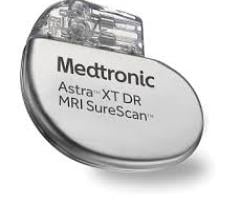
August 4, 2014 — New technology in the form of a magnetically assisted remote-controlled catheter (MARC), which could allow physicians to see and assess brain tissue more clearly while treating a stroke, may hold promise, according to study authors who released their findings at the 11th annual meeting of the Society of NeuroInterventional Surgery (SNIS) in Colorado Springs, Colo.
The findings stand to advance the field of neurointervention, which facilitates stroke treatment by navigating a catheter through the blood vessels, from a point of entry in the groin up to the problematic spot in the brain. Neurointerventionists typically accomplish this approach by manually directing the catheter and visualizing its progress under standard X-ray guidance.
With MARC, study authors sought to understand if a remote-controlled catheter under magnetic resonance imaging (MRI) guidance could more effectively accomplish maneuvering through complex vessel anatomy, which would ultimately allow improved visualization of the brain tissue affected during a stroke. "Given that MRI is the gold standard by which we determine brain tissue viability, it is exciting that we potentially now have new MRI-compatible technology that enables us, while treating a stroke, to make real-time assessments about whether brain tissue is dead or alive," said Steven Hetts, M.D., lead study author and associate professor of radiology at the University of California, San Francisco. "The implications are numerous, including improved medical decision-making, which would naturally result in optimizing patient safety and clinical outcomes."
To assess the performance of MARC, Hetts and his colleagues aimed to determine mean procedure times and success data for a custom, clinical-grade MARC prototype under MRI guidance as compared to a manually navigated catheter, under both MRI and conventional X-ray guidance — each procedure utilizing a cryogel vascular model designed to simulate the main and branch blood vessels in a living human. The MRI-guided procedures were performed at 1.5T using a balanced steady-state free precession sequence.
Results showed that MARC was clearly visible under MRI guidance and was used to successfully complete 192 (80 percent) of 240 total turns around blood vessels as compared to the manually directed catheter under both MRI and X-ray guidance, at 144 (60 percent) of 240 total turns and 119 (74 percent) of 160 total turns, respectively.
MARC also was faster than the manually directed catheter under MRI, with a mean procedure time of 37 seconds per turn as compared to 55 seconds, but comparable to the manually directed catheter under X-ray guidance, which required a mean of 44 seconds for each turn. When assessing time required to navigate the various angles of branch vessels at turns of 45, 60 and 75 degrees, MARC proved to be faster than the manually directed catheter under MRI guidance.
"Given that the success of neurointerventional stroke treatment is directly tied to how fast and accurately physicians can eliminate the impact of a clot and restore blood flow to viable portions of the brain, technology that facilitates this objective stands to be transformative," said Hetts. "By proving that MRI-guided neurointervention could be more effective than current standard approaches to stroke treatment, we are taking a significant step forward in the advancement of our field."
For more information: www.snisonline.org

 August 14, 2024
August 14, 2024 








